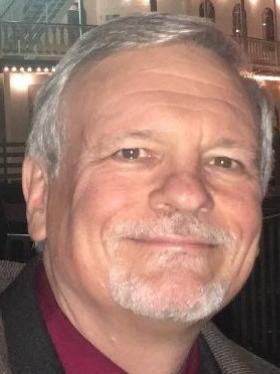March 25, 2024
By Susan Shaheen, Director, Resilient and Innovative Mobility Initiative, UC Institute of Transportation Studies (UC ITS); Mollie Cohen D’Agostino, Policy Lead, Public Transit and Shared Mobility, UC ITS; and Brian D. Taylor, Director, Institute of Transportation Studies at UCLA
Over the past year researchers from across the UC Institute of Transportation Studies (UC ITS) produced a collection of research on public transit and other forms of shared mobility, examining many of the most pressing post-pandemic challenges facing these transportation systems. This article highlights noteworthy findings and recommendations from this body of work, including post-pandemic ridership trends, the fiscal health of public transit agencies, pros and cons of fare-free transit, transit operator shortages, best practices in zero-emission bus deployment, and more.
The pandemic caused reductions in public transit ridership, and revealed socioeconomic disparities in the ability to work from home.
Researchers at UCLA and UC Berkeley explored pandemic-era trends in public transit usage, showing that California’s transit ridership largely followed national trends, with steep declines in 2020 followed by a halting and uneven recovery – with California’s transit ridership reaching only 56 percent of pre-pandemic levels by 2022. Researchers also found that transit agencies were initially shielded from near-term financial impacts of pandemic-caused ridership declines, thanks to federal stimulus measures. Researchers at UCLA and UC Davis also explored working from home trends, revealing that higher income earners saw the most substantial upticks in working from home during the pandemic, which led to falling ridership to and from downtowns.
Some public transit systems are doing relatively well financially, while others are struggling, which poses the question: Is public transit a service or a public utility?
Many transit agencies are facing a fiscal crisis as federal stimulus funds are spent down, spurring policy debates over whether and how state public transit funds should be allocated or changed going forward. Researchers quantified the nature of the fiscal shortfalls and explained the varied experiences of transit agencies in the state, showing that ridership and finance problems vary by agency and region, with Bay Area agencies hit hardest, particularly those serving downtown San Francisco. Researchers also explored the future of state funding for transit operations in California, and recommended changes to the Transportation Development Act, including a de-emphasis on farebox recovery rates. Our leading public transit scholars suggest that public policy priorities must balance providing transit service where people need service most, not only where there are the most riders. This would constitute a policy shift away from viewing public transit as a “nice-to-have” amenity towards an essential utility, like energy and water, that provides a critical mobility safety net to ensure equitable mobility for all Californians.
Fare-free transit programs increase ridership, but may not be the most cost effective way to accomplish this goal; strategically targeted fare relief may be a better, and fairer, way to increase rider access.
Since the pandemic, there is growing interest from state lawmakers to evaluate the potential of fare-free or reduced-fare transit programs. Fare-free programs can be effective for types of service – typically on systems and services where farebox recovery rates are already low and riders are disproportionately low income. Research shows that fare-free programs increase ridership by giving free rides to all riders regardless of ability to pay, but this may be a relatively expensive way to increase patronage on systems with higher farebox recovery rates and larger shares of higher-income riders. More targeted reduced- and fare-free programs, aimed at students, younger, older, and low-income riders, can direct benefits where they are most needed and have the biggest effect on patronage.
The transition to zero-emission buses requires careful advanced planning.
Public transit agencies are preparing for the California Zero Emission Bus (ZEB) purchase requirement starting in 2029. To inform this effort, UC Berkeley researchers published a ZEB Implementation Guidebook for California Transit Fleets highlighting strategies for how agencies can implement battery charging protocols, build potential hydrogen fueling into their mix, and develop and administer training practices for ZEV maintenance.
Poll shows best practices for public transit agencies to better connect passengers to shared scooters and bikesharing. UC Berkeley researchers explored the magnitude of interactions between shared micromobility and rail public transit systems and identified key strategies for leveraging micromobility to improve public transit access, including targeting bike infrastructure investments toward areas with public transit connections, converting vehicle travel lanes or streets to active transportation use; establishing or expanding parking places for active
Ridehailing is bouncing back post-pandemic, but connections to public transit buses and trains are relatively modest.
Research published by UC Berkeley points to the nuances of understanding how ridehailing availability (on services like Lyft and Uber) affects public transit usage. The research identifies patterns across geographic regions and sociodemographic groups and finds that a relatively small percentage of ridehailing trips connect to public transit: 13% in San Francisco and 7% in Los Angeles, for example.
The pandemic opened a lasting pathway for more creative uses of public curbs.
Research from UC Berkeley points to thousands of examples of cities allocating parking spaces for outdoor dining, parklets, and retail activities in the early 2020s. While most of these use cases were initiated as short-term installations, many public agencies reported finding ways to preserve/expand them, and this has prompted new thinking on how we plan and prioritize curb space.
Public transit operator shortages stem from many sources.
A UCLA study evaluating transit operator experiences finds that pandemic era operator shortages reflect numerous unresolved issues for the public transit workforce. While some agencies have successfully coped with labor shortages, many agencies still face issues with finding, training, and retaining drivers and mechanics. Despite these labor shortages, wages have remained mostly flat over the past decade when adjusted for inflation. While wage increases are essential for transit operators, reforms elsewhere are also needed, including enhancing outreach and recruitment efforts, reforming scheduling protocols, updating disciplinary policies, and solidifying pathways for career advancement.
Publications Coming Soon in 2024:
- Universal basic mobility programs and mobility wallets are a promising new tool for encouraging multi-modality and accessibility.
Researchers at UCLA and UC Davis have collaborated over several years to study deployment of a large scale mobility wallet pilot in Los Angeles. This pilot allows users to pay for and receive subsidies for multiple transportation modes, including transit and shared vehicles/bikes/scooters.
- Microtransit can complement fixed route service, but scaling service is not without challenges and tradeoffs.
Efforts to expand on-demand shuttles, referred to as microtransit, have been numerous, and researchers are tracking many of these deployments. Research points to the need to reform metrics of success for these types of offerings and align performance measurement to local and community priorities. Several collaborative research projects on microtransit are underway to understand how to design microtransit services to complement public transit and how to effectively scale microtransit services.
- Public transit agencies can build-in seismic resilience planning and anticipate rerouting strategies. Transit agencies need to consider broader resilience challenges and develop plans for restoring service after natural disasters. For example, researchers at UC Berkeley are studying the effects of earthquakes on trunk line transit service with results coming soon.
- More fare-free research is on the horizon. Also keep an eye out for upcoming research from UC Irvine that evaluates the empirical effects of fare-free service for K-14 students. This will add to the robust literature from UC ITS on evaluating the impacts of fare relief.
- Trends in travel behavior and public transit agency activity around the state. UC Irvine researchers are actively working to assess travel trends and the prevalence of working from home with results expected soon. UC Berkeley researchers are looking to understand more about rail ridership by investigating rail stations characteristics and associated ridership. UC Davis researchers are investigating uptake of technical support provided by the California Integrated Travel Project.
Looking for more? View completed and in-progress projects on the UC ITS website and browse UC ITS publications on eScholarship. Have questions or are interested in collaborating? Reach out to the Policy Lead for the Public Transit & Shared Mobility Portfolio, Mollie D’Agostino.
The research presented in this article was made possible by the State of California’s support of both the UC ITS and its Resilient and Innovative Mobility Initiative, reflecting UC ITS’ mandate to serve as the transportation research arm for the people of California.
Sources
Circella, G., Iogansen, X., Makino, K., Compostella, J., Young, M., & Malik, J. K. (2023). Investigating the Temporary and Longer-term Impacts of the COVID-19 Pandemic on Mobility in California. UC Davis: National Center for Sustainable Transportation. http://dx.doi.org/10.7922/G23X84ZS Retrieved from https://escholarship.org/uc/item/0xm768km
Gahbauer, J., Matute, J., & Taylor, B. D. (2023). Options for the Future of State Funding for Transit Operations in California. UCLA: Institute of Transportation Studies. Retrieved from https://escholarship.org/uc/item/2zb6z5rm
Ju, Mengying, E. W. Martin, and S. A. Shaheen (2024). “What Is the Connection? Understanding Shared Micromobility Links to Rail Public Transit Systems in Major California Cities,” Sustainability, Vol. 16, 555, January, 18 pages. https://www.mdpi.com/2071-1050/16/2/555
King, H., & Taylor, B. D. (2023). Considering Fare-Free Transit in The Context of Research on Transit Service and Pricing: A Research Synthesis. UCLA: Institute of Transportation Studies. http://dx.doi.org/10.17610/T6161T Retrieved from https://escholarship.org/uc/item/5mv677wf
Loukaitou-Sideris, A., Wasserman, J. L, Ding, H., & Nelischer, C. (2023). Homelessness on the Road: Reviewing Challenges of and Responses to Homelessness in State Transportation Environments. UCLA: Institute of Transportation Studies. http://dx.doi.org/10.17610/T6DC77 Retrieved from https://escholarship.org/uc/item/36f1x9v3
Lipman, T., & Rogers, E. (2023). Zero-Emission Bus Implementation Guidebook for California Transit Fleets. UC Office of the President: University of California Institute of Transportation Studies. http://dx.doi.org/10.7922/G2TD9VPM Retrieved from https://escholarship.org/uc/item/8x88036r
Nations, J., Fu, Y., & Rabinowitz-Bussell, M. (2023). How Regional Transit Agencies Can Serve the Daily Mobility Needs of the Unhoused Population. UC Office of the President: University of California Institute of Transportation Studies. http://dx.doi.org/10.7922/G2G15Z65 Retrieved from https://escholarship.org/uc/item/2h48g8sn
Shaheen, S., Martin, E., & Stocker, A. (2023). Transportation Network Companies Might Be Pulling Riders from Public Transit, but This Could Change. UC Office of the President: University of California Institute of Transportation Studies. http://dx.doi.org/10.7922/G2RF5SBH Retrieved from https://escholarship.org/uc/item/6rb1j5wb
Siddiq, F., Wasserman, J. L, Taylor, B. D, & Speroni, S. (2023). Transit’s Financial Prognosis: Findings from a Survey of U.S. Transit Systems during the COVID-19 Pandemic. Public Works Management & Policy, 28(4), 393-415. http://dx.doi.org/10.1177/1087724X231160097 Retrieved from https://escholarship.org/uc/item/3qf4h886
Speroni, S., & Taylor, B. D. (2023). The Future of Working Away from Work and Daily Travel: A Research Synthesis. UCLA: Institute of Transportation Studies. http://dx.doi.org/10.17610/T64W3D Retrieved from https://escholarship.org/uc/item/23v094qk
Wasserman, J. L, Gahbauer, J., Siddiq, F., King, H., Ding, H., & Taylor, B. D. (2023). Financing the Future: Examining the Fiscal Landscape of California Public Transit in the Wake of the Pandemic. UCLA: Institute of Transportation Studies. http://dx.doi.org/10.17610/T6CC9P Retrieved from https://escholarship.org/uc/item/6r867462
Wasserman, J. L, Siddiq, F., & Taylor, B. D. (2022). How Are California’s Public Transit Operators Faring Fiscally Coming Out of the Pandemic? UCLA: Institute of Transportation Studies. Retrieved from https://escholarship.org/uc/item/02k9d06g
Wasserman, J. L, Padgett, A., & Do, K. (2024). Transit, Belabored:Issues and Futures forCalifornia’s FrontlineTransit Workforce. UC Office of the President: University of California Institute of Transportation Studies. http://dx.doi.org/10.7922/G2S180TK Retrieved from https://escholarship.org/uc/item/2036z8c4

